I love everything about food – the components, the assembly and the presentation. I enjoy experimenting with colour palettes and taste palates, textures and light. I love to highlight the net skins of cantaloupes and the bum cheeks of peaches, almost as much as I enjoy sushi and (cooking with) wine. I love highlighting the beauty of a dish but that’s not always real – the pretty food you see on this blog represents a tiny portion of my food reality – please don’t take it as the entire gospel. Many a time, I bite into a juicy peach and barely have time to notice the soft downy skin, or the patches of colour. Sometimes I ignore the pleasure of eye candy and focus on the ‘taste’, enjoying the combination of flavour makers that results in a gorgeous plate.
One thing I’ve always wondered about Nigerian food is ‘Does it sit pretty’? My memories of food at home don’t involve elaborate/delicately styled food. Yes, plates are garnished – slices of tomatoes, onions and parsley greenery are common, as are molds of rice and sauce nested in bowls. Fancy serveware – crockery and cutlery though are not part of the deal: so a small roadside cafe won’t focus on getting paisley embossed saucers as perhaps they might do in Paris, but that’s just the way it is.
Now since I discovered food photography, my approach to food has changed somewhat. I love the way the colours of food and the utensils on which they are served interact, like a salad full of yellow tones looks superb on a black plate but I also love eating some things with my hands, sans cutlery with banana leaves as the canvas. In a small way, I’ve struggled with making Naija food look good as I know it, serving it so it appeals to senses and sensibilities outside the norm. OK, with rice its not so bad, as with meat but how do you make Ukwaka look good? I must also admit a preoccupation with making Nigerian food accessible to the world. Not so much to make people cook it but to create an awareness of what it is all about- the ingredients, the cooking styles, the composition of our meals. For me, the simplest way to do this is to find and draw parallels, highlighting similarities between western/oriental dishes so people can relate to them. I am constantly on the look out for reviews were descriptions of African spices are linked to common known flavours like cinnamon, cardamom, black pepper and more.
I’ve decided that I’ll share my recipes and celebrate them for what they are – sometimes plain, often simple (in a complicated sort of way) and commonly served without fancy and perhaps eaten with only a spoon or fork to dissects its goodness. Something we can all understand.
Today I share a recipe for Ukwaka, a savoury steamed plantain pudding, thickened with polenta and a short cast of other ingredients, typically wrapped up and cooked in waterproof banana leaves … and that’s as fancy as the gear gets.
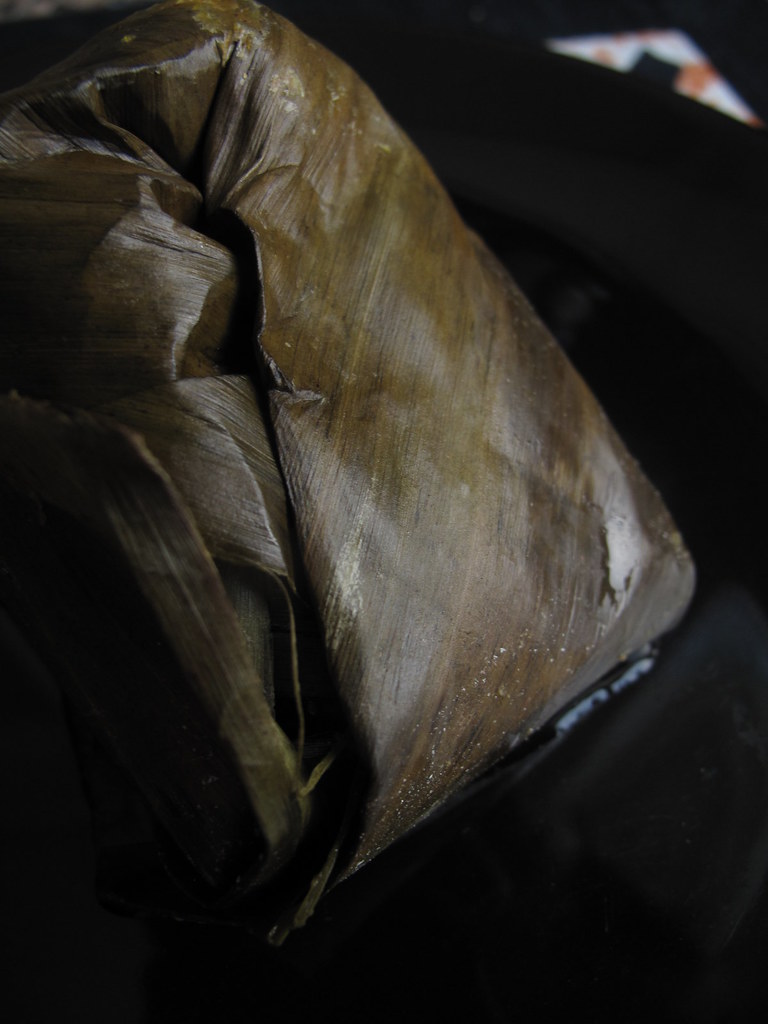
Ukwaka can be breakfast food, served with hot, milky corn pap or oats. It could be a snack. Or lunch. Or dinner. Best of all, it is the perfect remedy for overripe plantains, as banana bread is for brown-speckled, soft bananas. Essentially, you take extremely sweet plantains, blend them with water, onions and chili peppers, season with some salt and dried crayfish if you wish and then bring them together with a sprinkling of polenta and some vegetable or palm oil. Once the batter is ready, you ladle it into ramekins or gently fold banana leaves into a cone sealing off base and top and then ‘water bath’ them (like you do for creme caramel/brulee) for half an hour or more, till the puddings are firm.
One critical success factor of this is the balance between sweet, hot and salty. The peppers need to be prominent but not too much to cut through the (otherwise sickening) sweetness of the plantains and that needs to be balanced with a healthy pinch of salt. Now, most Nigerians can’t handle a whole lot of sweet in their savoury, not as well as Indonesians can and you’ll find particular dishes which are almost always cooked with some chili pepper. Like fish. Majority of Nigerians say you need the heat from the peppers to cut through the monotony of the fish flesh and very few would eat fish without it.
The right amount of polenta adds body to the soft batter, a crucial ingredient. This is where I am glad that my documenting of recipe ingredients serves me well for future trials, for in the past I’ve made Ukwaka that was too firm, and Ukwaka that was too soft because I never got the ‘ratios’ right. My upbringing of ‘loose estimation’ in cooking has helped me experiment, and vary the way I cook a particular dish but it has hindered me in that there is a propensity to failure with the lack of repeatability. When you write a recipe down, you immortalise it and can consistently repeat it, barring minor variations. When you don’t have that template and a poor memory, things get tough.
Another reason I’m glad for food blogging….whereby I am encouraged to write down my recipes, cataloguing ingredients and processes and learning in the process too. I am glad to say all turned out well. And I now have the ratios right: were I to make this tomorrow, I would have firm boundaries to constrain me.
Ukwaka
Ingredients
3 overripe plantains, peeled and cut into 2 inch pieces 1 small (red) onion 1 – 2 fresh chili peppers, to taste 2 tablespoons (vegetable/palm) oil 1 and 1/2 cups water, room temperature 1/2 cup polenta Salt, to taste 1 tablespoon dried, ground crayfish (optional) To cook: ramekins or fresh banana leavesHow to
In a blender or food processor, combine plantains, onion, peppers, oil and water till smooth.
Pour plantain batter into a bowl and add polenta (and crayfish, if using), stir till well combined and then salt to taste.
Now, decide on what to do. You have two options
Option 1. Using ramekins
Spoon the mix into lightly oiled ramekins – this is the easiest option. You’ll need 6 – 8 ramekins, only 3/4 full. Place ramekins in a large pan – fill the base and if any are left over then create another layer with the rest, in pyramid fashion – more ramekins at the base and less on top. Pour water just shy of the height of the first layer, being careful not to let the water into the ramekins. Cook on the stovetop on medium heat for half an hour or more, till the puddings are firm.
Option 2. Using banana leaves, the traditional way
This is trickier option, especially if you aren’t used to using them. I am so I didn’t have a lot of concern till I unfurled the batch of frozen leaves I had and tried to assemble them into useable containers. The strips of leaves I had were halves from rather large leaves, where as I am used to using much smaller leaves. In the end, I managed to fashion a cone from a couple of pieces of leaves for each portion. The base of the cone was folded up to prevent the mix from seeping out and once I had ladled a spoonful of the mix in, I pretended the top part was part of my aeroplane folding kit and sent the two edges in to an imaginary centre and the peak was folded down, so it almost touched the tip of the base of the cone.
Sorry if it sounds complicated – promise you a video soon.
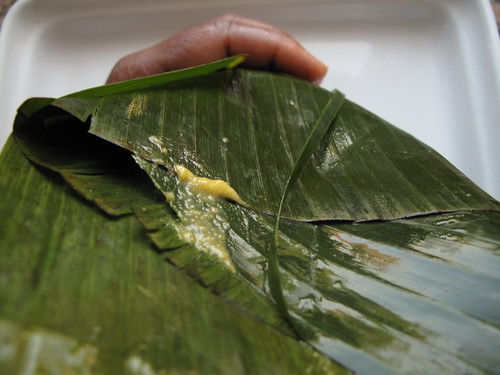 When your batter is all used up, line the base of a large pan with some banana leaves and stack the banana wraps, first covering the base and then putting the rest on top. Pour in a couple of cups of water – not to cover the wraps but up to a third of the way up. You could always start out with a little and add more water as necessary. They should be ready after half an hour of cooking on the stovetop.
When your batter is all used up, line the base of a large pan with some banana leaves and stack the banana wraps, first covering the base and then putting the rest on top. Pour in a couple of cups of water – not to cover the wraps but up to a third of the way up. You could always start out with a little and add more water as necessary. They should be ready after half an hour of cooking on the stovetop.
When they’re ready, allow to cool for a few minutes and then serve as you will.
I had mine plain, and then with some left over pan-fried tilapia. I love it – the spice from the peppers balanced the sweetness, and had such depth of flavour for the such simple ingredients. I loved the texture – it was soft with a smooth ‘crumble’ look, which wasn’t at all dry – testimony to the perfect proportion of polenta. I love it as did my sis – she got the one in the ramekin. She felt it was a tad too hot for her but agreed that it needed it.
Just a tiny bit of home on a cold summer’s day in the Netherlands, served on banana leaves. Warmth.

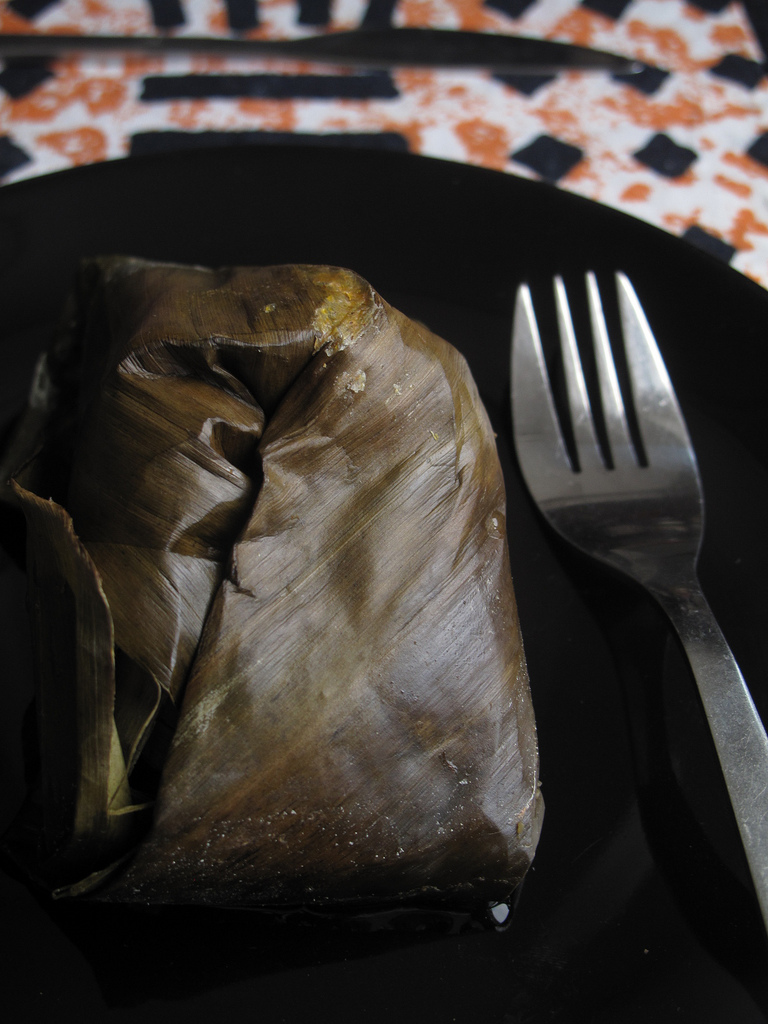

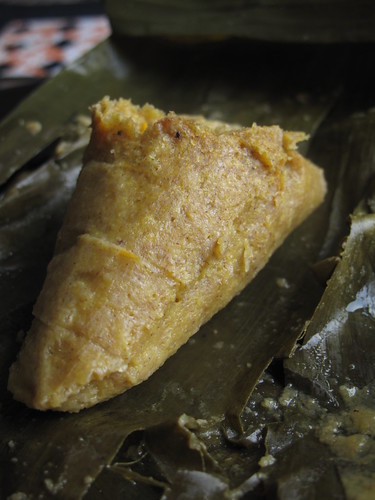
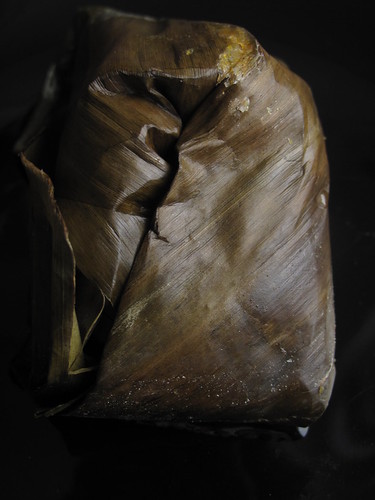
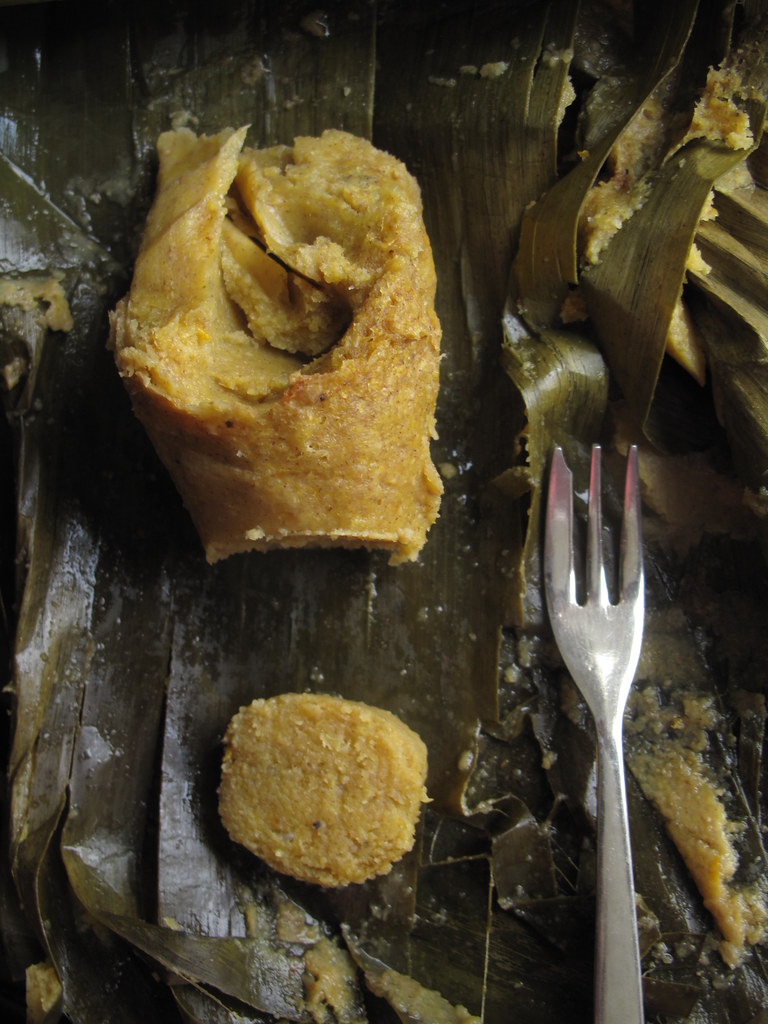
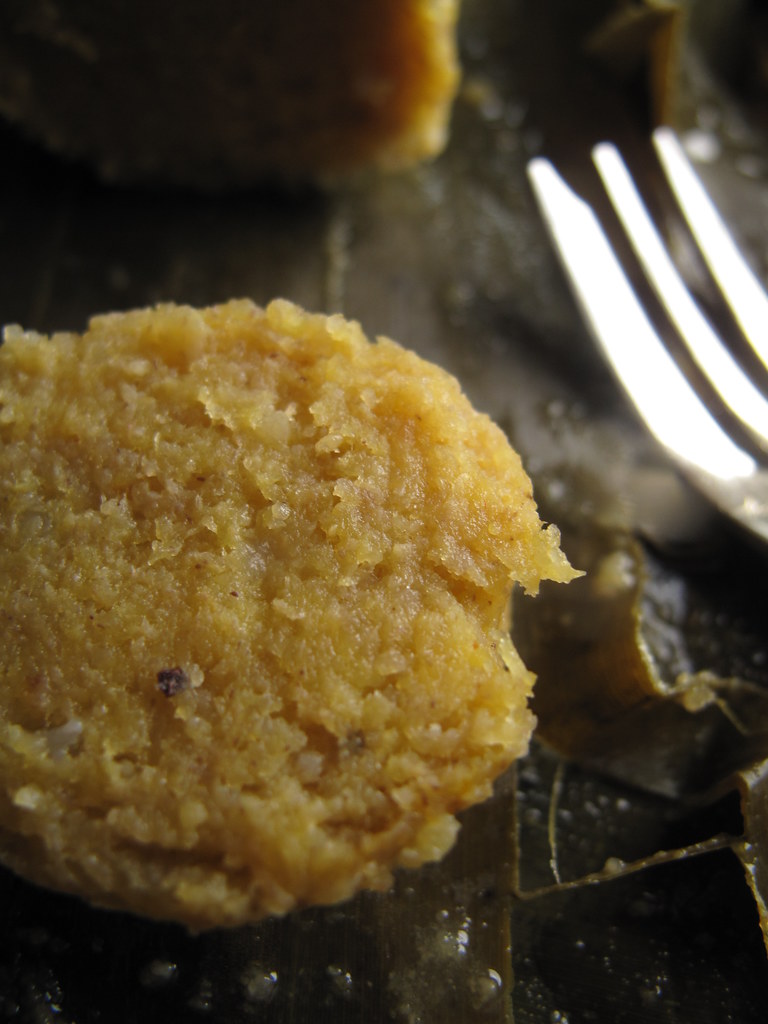
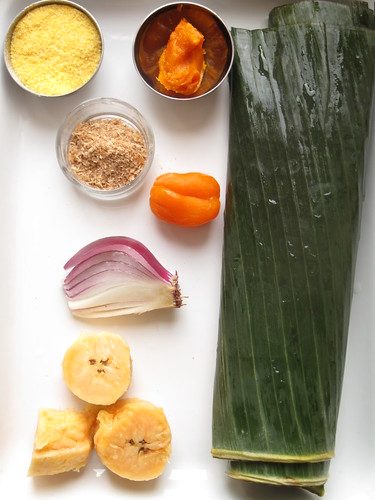
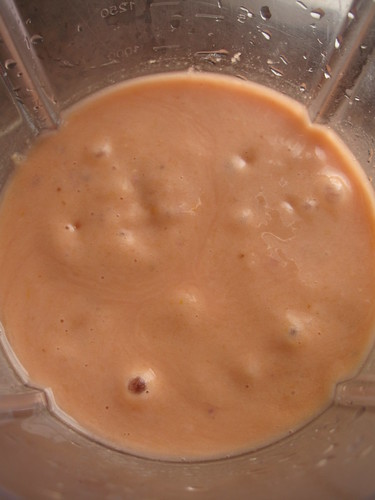
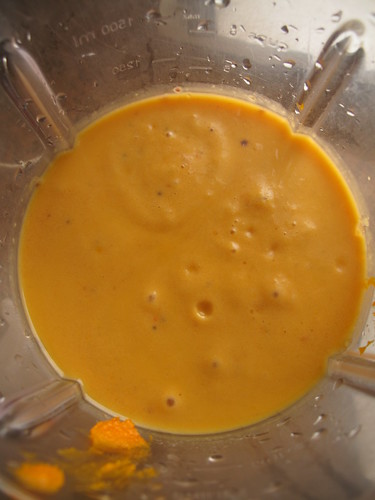


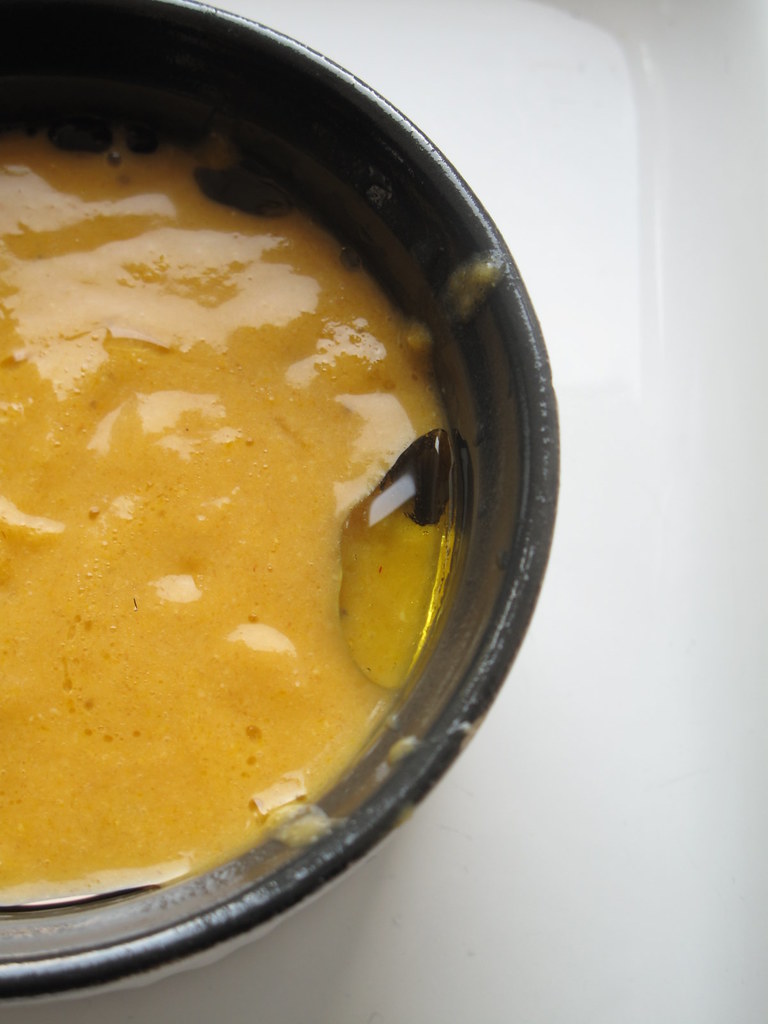

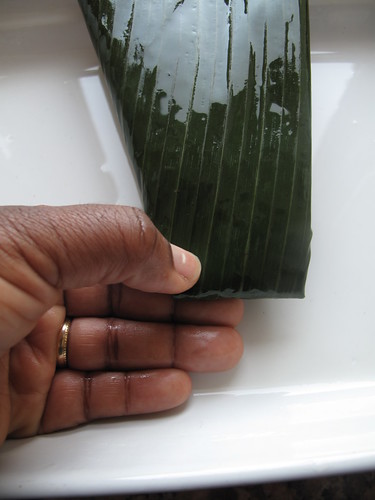
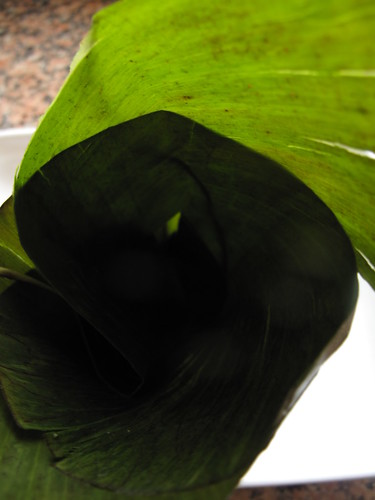
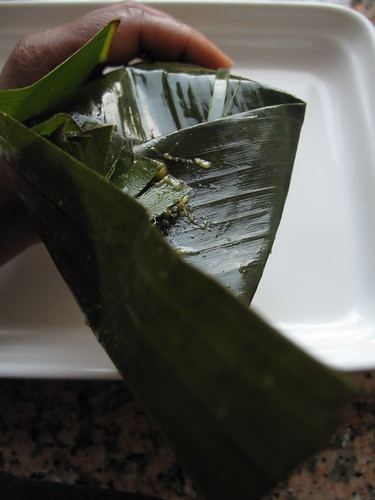
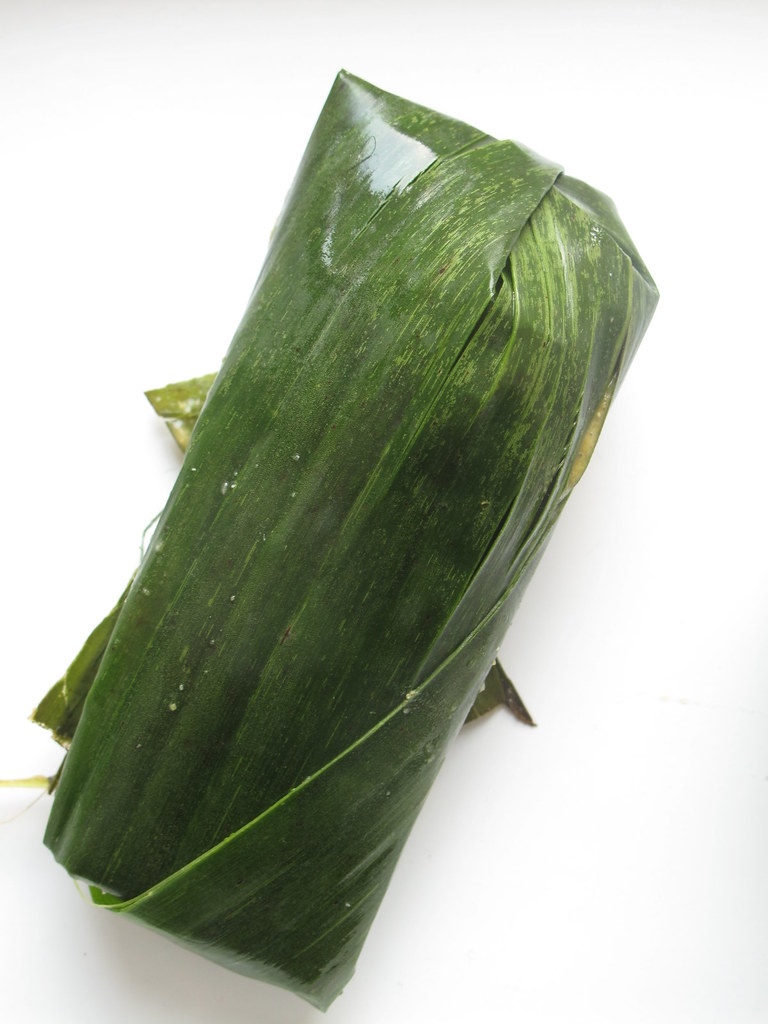
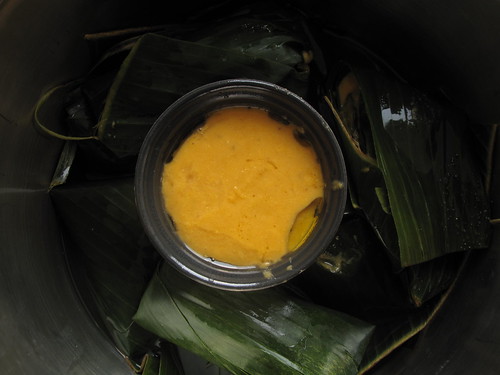

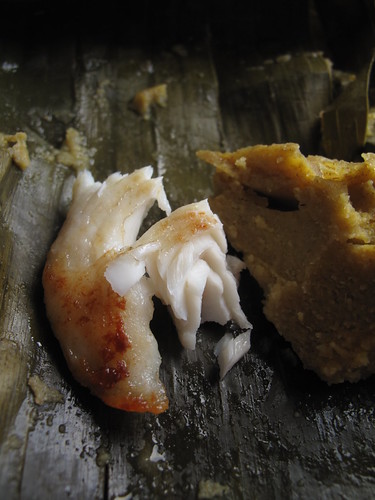

Leave a Reply